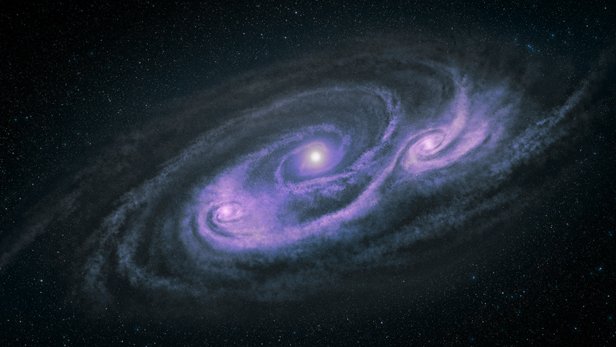
EOS scaling has begun and it is taking place in the form of side chains. This is possible due to the inter-blockchain communication (IBC). IBC is basically a way to communicate from one EOS side chain to another. Why is this so important though?
Let's theory craft for a moment and think about what a global EOS Network might look like. At the time of this post the maximum transactions per second on the main chain was around 4,000.
Current Network as of Sept. 2018
There are 21 block producers around the world on the main EOS chain. This can be changed and side-chains must have their very own block producers to match their very own governance model. Side-chains may have their very own governance model that doesn't follow the original EOS chain. In fact a side-chain can have more than 21 block producers and essentially go for well over 100. This will be at the cost of transactions per second on this specific chain.
Begin Scaling with a small Country
The United Kingdom is the perfect example for a small country that can be consumed by Blockchain Technology.
The United Kingdom has a total of 69 cities in their country.
Inside of each city let's say that 21 citizens are elected to become block producers for their city. There is now 1449 block producers running the network in the United Kingdom.
Not only that let's go ahead and ensure they have backup producers as well. We'll give them a total of 10 backup producers each. That means that 2,139 nodes will exist in the United Kingdom if they were all using EOS.
Now let's make sure that each city has their very own side-chain. That means that each city with 4,000 transactions per second and 21 block producers is running their very own network. This is around 276,000 transactions per second between a single country.
Let that sink in for a moment. We've just covered a single country with EOS Side-chains in each city and it's producing 276,000 transactions per second all together thanks to inter-blockchain communication.
Begin Scaling with a Large Country
Russia is a large country that could be consumed by blockchain technology thanks to their heavily censored region. We'll begin with Russia having 1,110 cities in total.
Russia really wants to be decentralized this time so they elect 50 block producers per city. That is a total of 55,500 block producers in Russia. We'll also make sure they have plenty of backup producers as well. We'll give them 50 backup producers as well. Which makes for 111,000 nodes inside of Russia.
Each of these cities is now their very own side-chain as well. Russia will be utilizing the inter-blockchain communication and will achieve around 4,400,000 Transactions Per Second between all of their side-chains.
Going Global
According to various articles there are around 380,000 cities and towns in the entire world. Let's begin by giving each city or town their very own side-chain with 21 block producers each. Which will result in about 7,980,000 block producers world-wide.
Take into account that we should probably give each town or city around at least 10 to 15 backup producers.
The world will have a total of 11,780,000 nodes in the entire world.
Now let's take into account how many transactions per second all of the side-chains will have.
1.52 Billion.
Don't believe me? Do the math.
Total Cities in the World * Current Transactions Per Second = Total Capability
What I Did Not Consider
EOS has not reached the bleeding edge of it's transactions per second capabilities. Especially considering that we've reached a little bit further than the average case stated by Dan Larimer. Which was around 3,000.
Our next mark is his 'best case' which is around 6,000 TPs. After that we'll reach the Theoretical Case of 8,000 Tps.
This would put the full scale of this project's transactions per seconds around 3.04 BILLION transactions per second.
Is it Decentralized?
I'm not sure what else I need to tell you guys to prove that EOS is decentralized. You need to think well outside of your boxes to understand where Dan Larimer wanted to go with this project.
Our next steps will be adopting side-chains for each individual city in the world. Get to it.
Where do we go from world-wide?
I think Elon Musk knows the answer to this one.
